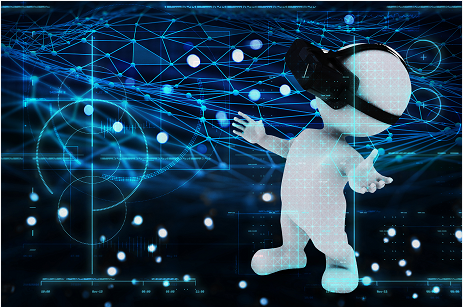How will 5G affect AR and VR?

How will 5G affect AR and VR?

The evolution of augmented reality and virtual reality worlds has sparked a lot of discussion. Part of the conversation focused on how AR and VR technologies can take advantage of 5G capabilities.
With MarketsandMarkets estimating that the AR and VR global market will reach $115 billion by 2027, the possibility of more immersive technology adoption across many industries is no longer in doubt. Meanwhile, 5G use cases have grown in recent years. Considering network capabilities, it is necessary to explore how fifth-generation networks will affect AR and VR technologies.
AR and VR explained
AR is a technology that allows virtual objects to be superimposed on the real environment without obscuring the real environment. AR attempts to provide additional insight into perception by generating and adding artificial infographics, images, videos, sounds, and other computer-generated details to reality.
VR, on the other hand, utilizes wireless VR headsets, sensors, or other immersive technology tools to recreate the real world and replace it with a virtual environment. In VR, users are isolated from the real world and immersed in interactive 3D models of digitized objects and simulated spaces.
How will 5G affect the evolution of AR and VR?
5G aims to provide more responsive, faster and more reliable connections than previous networks. But what impact do these qualities have on the future of AR and VR?
Reduce data congestion between headset and computer
VR experiences rely on huge amounts of data being transferred back and forth between the headset and the computer system. For high-quality AR and VR experiences, data must be transmitted quickly and without congestion. Unfortunately, when managing large amounts of data, it can be difficult for a 4G connection to convey all the information at once.
However, with 5G providing large bandwidth and low latency, AR and VR pictures, videos, and animations can be loaded without erratic performance, leading to better AR and VR experiences.
High-quality display for immersive video
Most AR and VR that display 3D video require higher bandwidth for seamless display. However, some AR and VR devices currently do not support the network connections that would facilitate and enhance the quality display of these bandwidth-intensive videos. This affects the user experience of these immersive technologies and hinders their growing use cases.
The advent of 5G could change that by offering higher amounts of bandwidth. By taking advantage of the millimeter wave technology provided by 5G, which runs on extremely high frequencies, AR and VR devices can render more realistic 3D video and immersive displays.
Infinite Extended Reality
Extended reality is a term often used to refer to AR, VR, mixed reality and other immersive technologies. Immersive technology companies are looking for a way to develop immersive mobile XR experiences that can render lifelike visuals by combining 5G and edge computing.
Likewise, big VR and AR development companies like Qualcomm, HTC, and Samsung are all considering merging mobile VR headsets and AR glasses into a sleeker XR wearable.
Bringing these aspects of immersive technology together requires real-time communication, low latency, and seamless data transfer. However, applying 5G capabilities to AR and VR could make this more achievable.
Advancing the use of AR and VR in medical practice
The need for telehealth has never been greater or more applicable than it is today. Due to the COVID-19 pandemic, the number of telehealth consultations has increased significantly. With this in mind, healthcare workers can be trained and prepared for anatomical visualization through AR goggles. Such AR/VR-driven medical practices require high bandwidth, fast communications, and low latency, and this is where 5G can make a meaningful impact.
5G can provide a stable connection for response time between patients and medical advisors, thereby promoting the application of AR and VR in telemedicine procedures. Adding 5G to the mix will also ensure high-end display of images and video to help consultants keep an eye on patients in real time. In other words, 5G could advance the use of VR in learning how to perform surgery without touching the patient.
more realistic games
Previously, gamers relied on flat-panel displays to play games. But with the advent of immersive technologies like AR and VR, players can immerse themselves in more real and personalized environments. This new development has given a boost to the video game industry, making it a booming market. According to a recent report by Technavio, the global gaming market is expected to reach $75 billion by 2026.
With the increasing use of AR and VR in modern game development, 5G can further advance these games. The application of 5G will ensure that developers create games with better graphics quality and better response time without network lag.